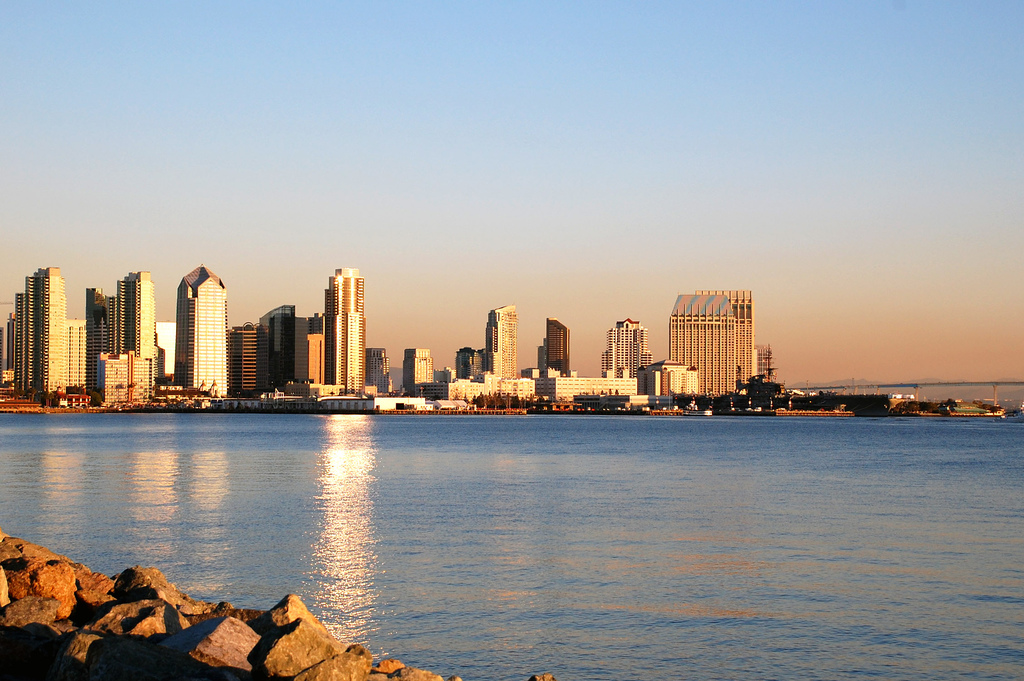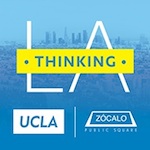
As a veteran member of the San Diego media, I have been asked by Zócalo editors to write a brief essay which throws light on this question: “Why is San Diego, the nation’s sixth-largest city, which has so much potential, underperforming?”
That is a heck of a good question. How in the world does a city become the sixth-largest in the United States while underperforming at the same time?
Actually, we are not “sixth-largest.” The 2010 census shows us at number eight, with Phoenix at six and San Antonio at seven. Estimates updated in 2012 uphold that standing.
The error is an example of the power of underperforming. To editors in L.A. and elsewhere, underperformance makes you appear bigger than you actually are. It is a nuance in our civic arsenal that we have gone to many times. We wouldn’t mind coming in 12th or 15th, if we could get the census to skip counting us for a cycle or two. Back in 1972, when the Republican National Convention dumped us for Miami Beach at the last minute, we decided in a fit of pique to advertise ourselves as “America’s Finest City.” It didn’t work. We couldn’t bring ourselves to be that dull. Much better to be “America’s Biggest Underperforming City.” Important people will ask: “How do they do it?” We will answer, close to the vest: “Potential.” And people will come to see the underperformer.
At the core of San Diego is a number set.
32 81 53 117 13 50
Those are map coordinates, latitude and longitude, which remain essentially unchanged since September 28, 1542, when sailor-entrepreneur Juan Rodriguez Cabrillo, on one of the many profit quests in the wake of Columbus’ success, sailed into the mouth of a spectacular natural harbor and claimed the place for Spain. Location, location, location. Ask the Phoenicians, who come to us in droves every summer, if they would trade their number six rating for San Diego’s location.
We have done the best we could with it, we swear. A city started to grow. It turned out the first downtown was in the wrong place, but we moved it south and refitted the old downtown as “Old Town,” which has had appeal. We built a very nice park with a zoo in it that receives national acclaim. Charles Lindbergh’s plane, “The Spirit of St. Louis,” was built here, but then we put the city’s airport in the wrong place. Trying to move it has consumed half a century, and the slogan for the new airport has become “Not In Our Lifetime.” In the early 20th century, the U.S. Navy, no slouches when it comes to appreciating harbors, chose San Diego as its Pacific Fleet base. In underperformance parlance, what did that make us in the national media? “A sleepy Navy town.”
The media of course, can be a problem for us. It much prefers underperformance stories to stories about performance merit. Every city, I don’t care how great, coughs up the occasional hairball story, the recently disgraced Mayor Bob Filner in our case. One hairball story reaps more publicity than a hundred stories of performance merit, as Los Angeles is presently sweating through (don’t tell anybody, but Donald Sterling bought the Clippers while they were still in San Diego).
More curious to San Diego is the way the national media treats La Jolla, 15 miles from downtown, and the place around here where over-performance is worn on sleeves. When someone in La Jolla receives performance credit (Mitt Romney’s new house with its stack-a-car garage), the media sometimes misidentifies La Jolla as “a suburb of Los Angeles,” as if it is impossible to intellectually connect La Jolla with an underperforming, sleepy, Navy town.
We have beaches, neighborhoods both classic and funky, thriving online media, dining experiences of all kinds, the Chargers, a Sweet 16 NCAA basketball team, a mess of community colleges, several universities, several Nobel laureates, medical research, Seal Team Six, grand hotels owned by a newspaper publisher who insists on being known as “Papa Doug,” a cost of living appropriate to the nation’s eighth-largest city, and lots of culture, though the opera is mounting a battle against insolvency.
But nobody cares about that. To the outsiders, we are underperformers. Many of them say it like it is a bad thing. A Greek chorus, explaining the San Diego drama to an audience, might describe it as people learning to make the most of reality.
Our coordinates were unique, of course, and very powerful. But they were also boxed in, first by the Pacific Ocean on the west and the mountains (underperforming mountains, to be sure) in the east. The grand dreams of San Diego’s early over-performers, of which there were many, started to shrivel when the mountains diverted westward expansion north from San Diego, into the wide San Gorgonio Pass and directly into Los Angeles. California statehood in 1850 created an international border 15 miles south of downtown. Finally, in 1942, the north barrier rose with the creation of Camp Pendleton, literally sealing San Diego’s destiny. It was a cramped space for entertaining grand dreams, and so we let those dreams go and replaced them with performances within our reach. Today the Greek chorus might be tickled by our affection for Camp Pendleton (Semper Fi!), the bleak military moat between us and Orange County, where people start to get really serious about performance.
People, wherever they live, tend to like things about the place they live. Generations harbor a narcissism for their own time (“the good old days”) and populations do the same for their place. I still brag about being a Texan (where a central tap root goes deep and creates homogeneity), but not as insufferably as I once did. When I moved to San Diego in 1972, it took me 10 years to start to feel at home here. There were so many options from which to choose (places to live, work, learn, explore, exercise, join, attend, play, root, celebrate, write about, invest time, pass time) each with its own set of roots. If I had room, I’d tell you about a San Diego day trip that begins with surf, includes a desert hamburger and mountain snow, and ends at an open-air rock concert by the bay. San Diego roots are like Bermuda grass. Getting rooted here took me a decade, but once they were in, you couldn’t get me out with a backhoe.
Underperforming was one of San Diego’s community root sets. For the last 100 years, San Diego has framed its future as “smokestacks and geraniums,” always weighing “becoming L.A.” or remaining “L.A.-not.” Historian Sir Kenneth Clark, creator of the acclaimed PBS series Civilisation, wrote: “If I had to say which was telling the truth about society, a speech by a Minister of Housing or the actual buildings put up in his time, I should believe the buildings.” If we are to believe Kenneth Clark, San Diego in 2014 is L.A.-not.
Over time, it seems, we learned to use the concept of “enough” to steer by. Today our piddly airport offers long security lines, chaotic curbside scuffling, and few exotic travel options. We do have one daily nonstop to Tokyo, and one to London, to which a San Diegan is likely to say, “Isn’t that enough?” If it’s not, we can outsource this need to our large auxiliary city only 100 miles to the north. Away from our main terminal traffic sits a compact commuter terminal through which a traveler, bound anywhere in the connected world, may pass and come out the other side in just 40 minutes at LAX, inside security, with a 24/7 choice of flights to the exotic destination of his choice, including the global seat of the civic underperforming philosophy, which, the Greek chorus whispers, is Paris.
Thank you, Los Angeles, you old over-performers, for your lush palette of culture and entertainment for our outsourcing pleasure and your lovely Union Station in its 75th anniversary, providing us with connections from our lovely but crackerbox station to all Amtrak points north and east. We will always honor you as “America’s Biggest Auxiliary City” second to none.





Send A Letter To the Editors